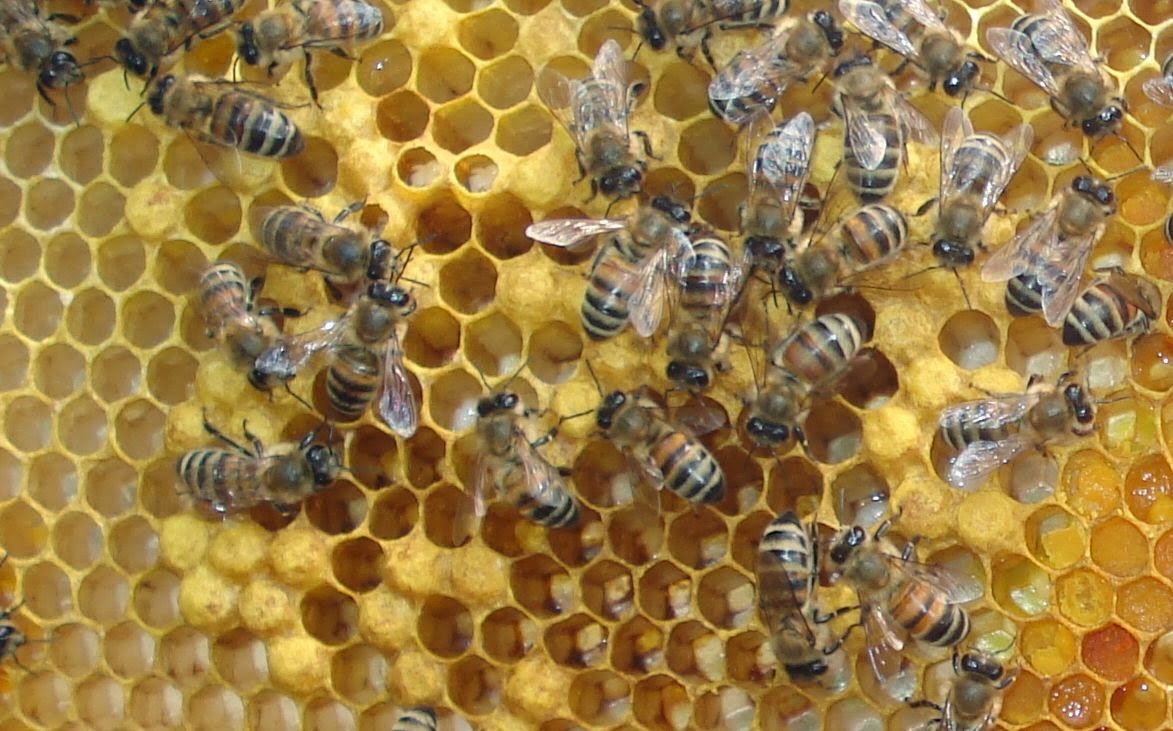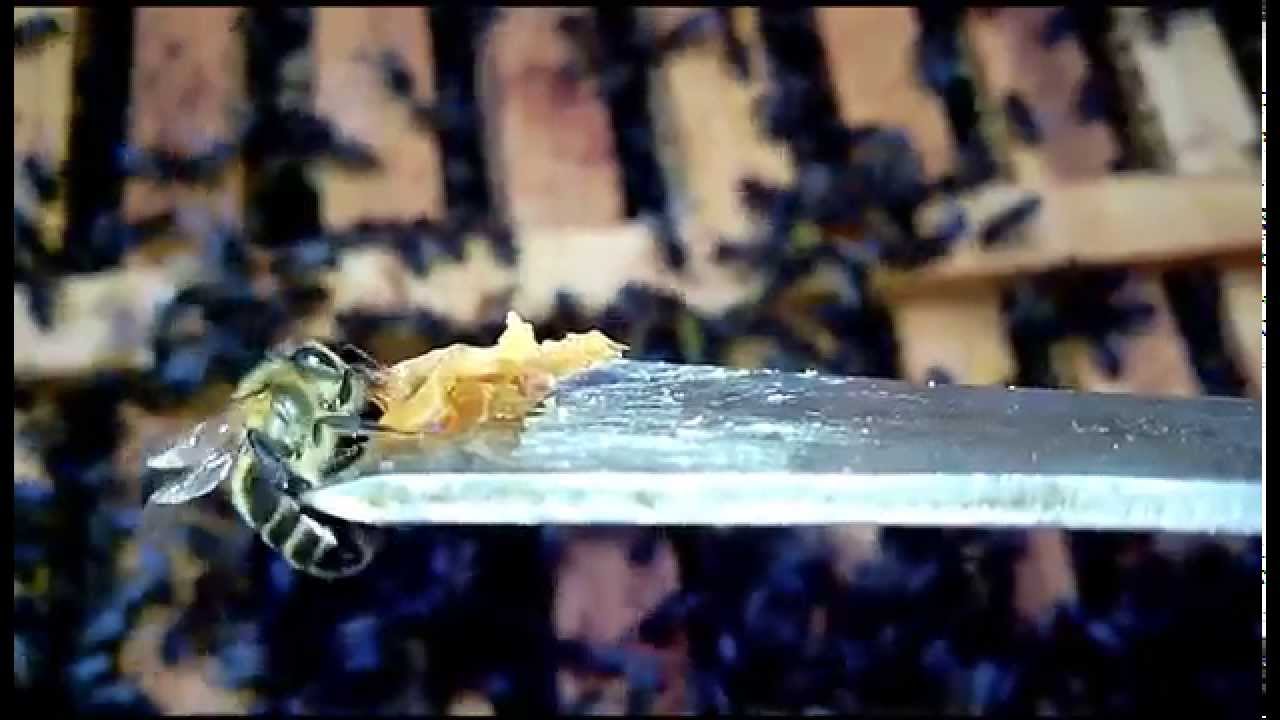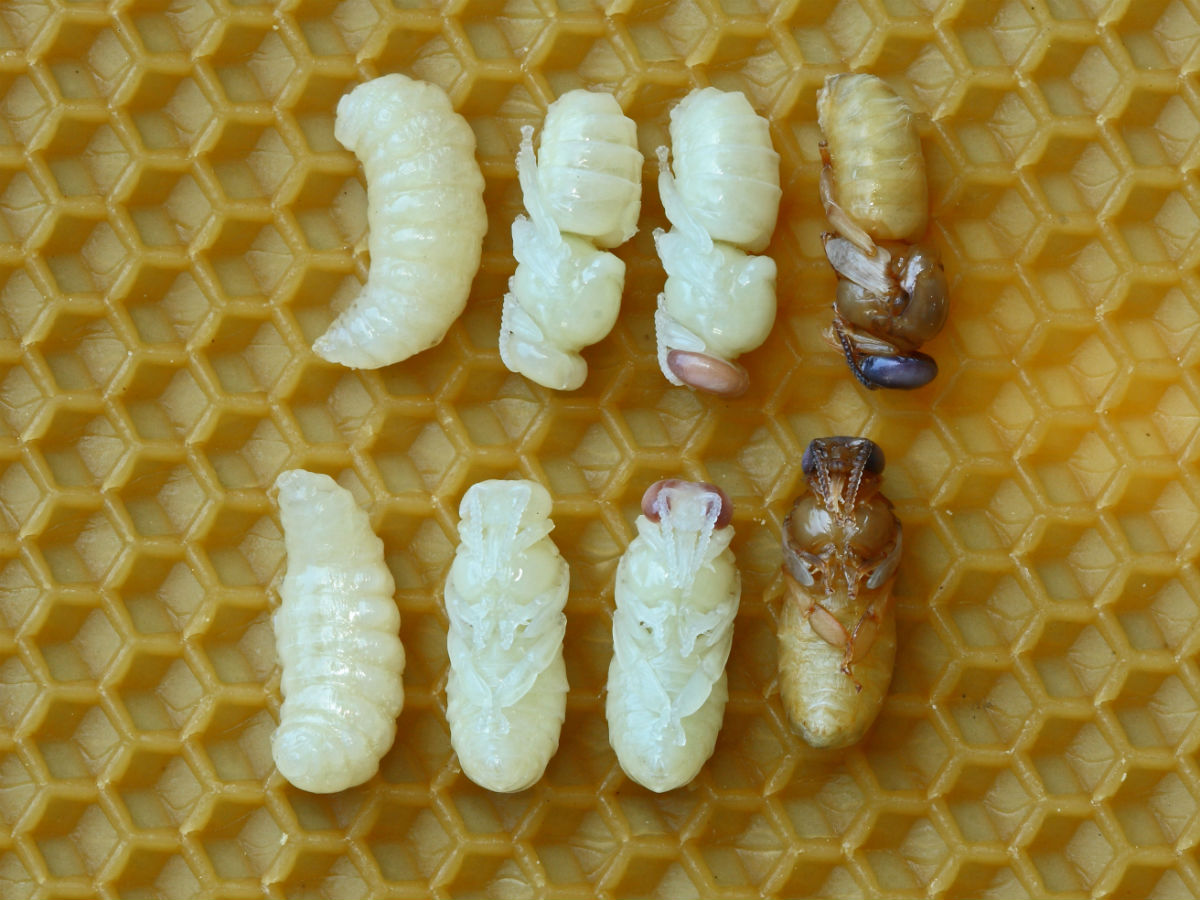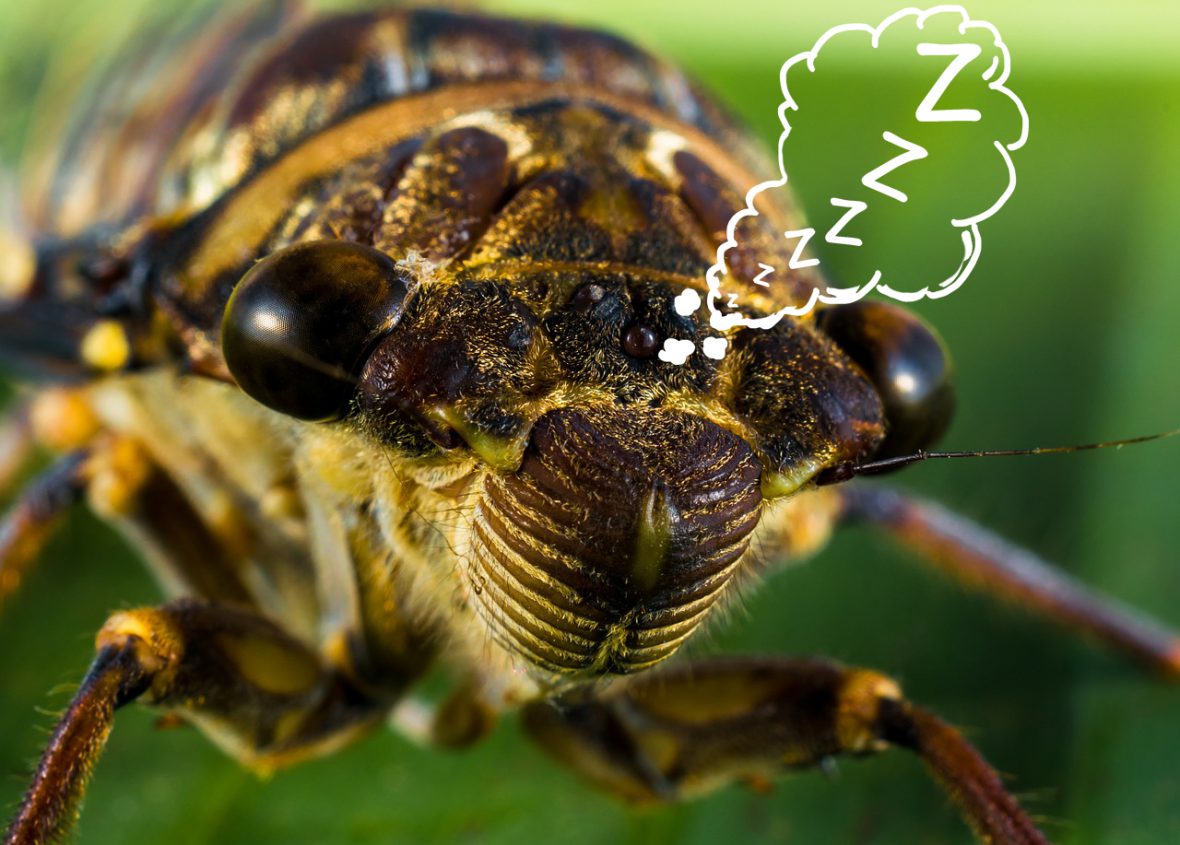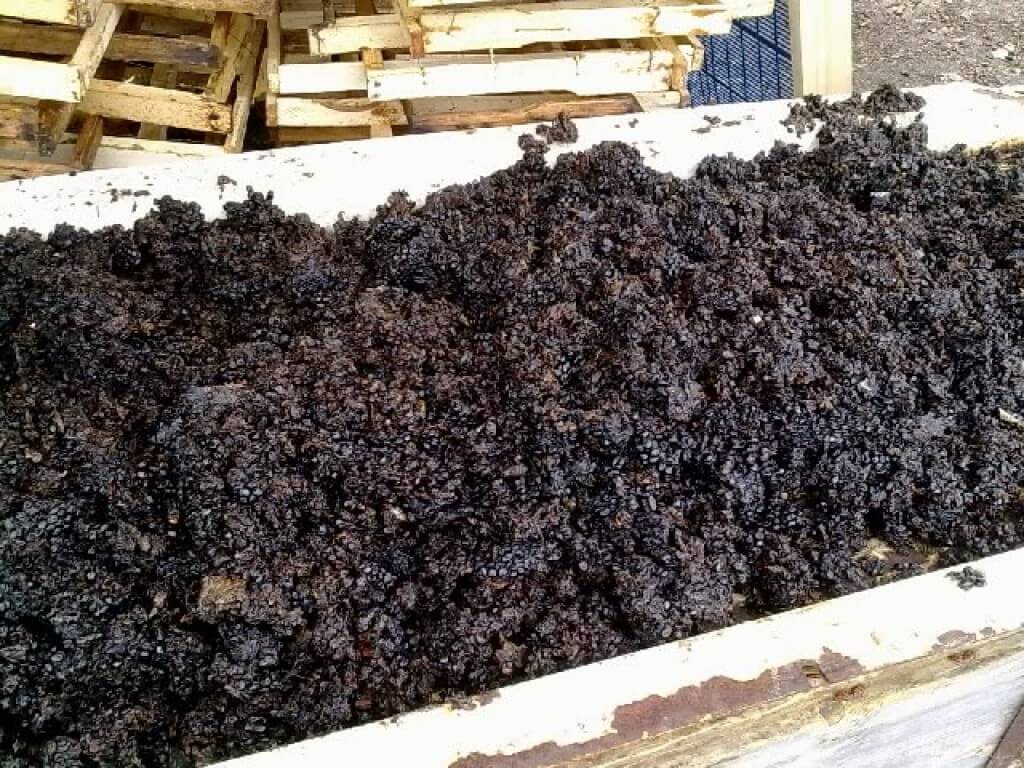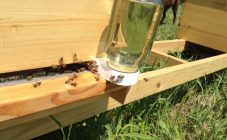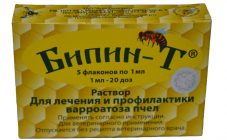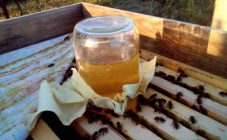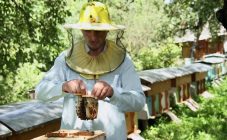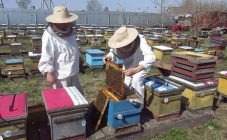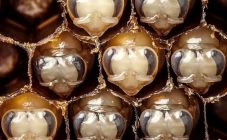Content:
Bees are about 100 million years old and their benefits for humans can hardly be overestimated. This beneficial insect pollinates almost all the plants of the planet and gives people such valuable products as honey. The bee can be found anywhere in the world. Insects develop together with honey plants. Their little body consists of a head, chest and abdomen. Beekeeping products are interrelated: an individual must bring nectar from three million flowers to get a kilogram of honey.
Life of a bee from birth to death
Where do bees live
Honeybees live in large families in a beehive that they organize themselves. In terms of the engineering complexity of the device, the hive is in second place after the human house.
What do bees eat
This issue should be approached as carefully as the human diet. Typically, bees eat nectar, pollen, and honey. Moreover, pollen helps insects to strengthen the muscle and endocrine systems in the body. In addition, these ingredients provide carbohydrates to support life. Thus, only healthy food is included in the list of what bees eat.
For a long time, researchers could not determine how the bees find their way home. This skill is necessary for working individuals who are able to travel many kilometers in search of food.
In order not to get lost, bees need:
- Biocommunication system.
- Orientation by the position of the sun.
- Terrain orientation.
The biocommunication system helps insects transmit information by exchanging various signals. These include, for example, the smell of a bee swarm. It helps individuals who have climbed far away to get home safely, because these insects have rather sensitive olfactory receptors.
As for the solar reference point, with this method, the level of cloudiness is not at all important for insects. The main reference point is the location of light in the sky and the vibrations it produces. Using this method, the individual quickly returns home, memorizing the traversed route, and keeping it in his head for several days. In addition, there is the fact of a good orientation on the features of the landscape, memorizing changes in the environment. These facts are established empirically by many scientists.
Development stages from egg to adult
The stages of development of bees have a certain sequence, like any other creature.
Development goes through several stages:
- egg;
- larva;
- prepupa;
- chrysalis.
All of these conditions are called bee brood. Moreover, the pupae are a sealed bee brood, and the egg clutch and larvae are open.
It all starts with the embryonic period, which comes from fertilization and the formation of a larva from the egg. Further, an adult is formed from the larva.
The larva consists of a small head and a white segmental body (similar to the structure of the worm). The outer shell is covered with a thin layer of chitin. The intestines play the main role in the structure of internal organs. Its anterior wall is represented by a short muscular tube. Muscle contraction allows the larva to digest liquid food. Along the entire length of the intestine is the excretory system, consisting of 4 Malpighian vessels.The hindgut has a curved shape and an anus at the end. Food debris does not enter the intestine, since the middle and hind intestines do not bind to each other. The heart of a larva consists of 12 chambers and is located in the dorsal region, while in an adult, the heart has only 5 chambers. The respiratory system consists of a tracheal trunk, stretched over the entire body, and having many branches.
There are rudiments of the reproductive and nervous system, but the olfactory and visual organs are absent. The lower lip is equipped with opening spinning glands that allow the larva to weave a cocoon.
Organizing the life cycle of a bee looks complicated. Life from birth to death is divided into three periods: the first period lasts from 1 to 10 days. During this period, the individual is called the hive because it lives and works in the hive. She cleans the cell of the hive, preparing it for laying eggs. To protect the eggs from hypothermia, the hive sits on the combs for a long time without moving or walks slowly on them. After a few days, the feeding glands develop in the head of the individual, and from this moment it begins to perform the functions of a nurse, which, with the help of special glands, produces royal jelly.
To grow larvae, bees have to return to the cell 2-3 thousand times. For a sufficiently long period of time, a bee is able to grow no more than 2-3 larvae. By the end of this period, the individual is sent on a tentative flight, which lasts no longer than 5 minutes. Despite its short duration, the insect will look around well and remember the area and a little later will be able to find its way home from a distance of several hundred meters. After several training flights, the bee will perform actions far beyond the hive.
The second period of life lasts from 10 to 20 days. At this time, the individual ceases to act as a nurse, since its feeding glands atrophy, but at the same time, the wax glands receive the highest developmental peak. With the help of them, insects equip their home. In addition, at this age they accept and process the extracted nectar. In the process of processing, the cells are filled with nectar, the pieces are crushed and compacted, which are thrown into the cells by individuals collecting nectar. Another task is to maintain order in the hive. To do this, insects collect various waste, and flying out some distance outside the hive, throw off their load.
What time do bees go to bed
If you observe the life and behavior of bees, you may get the impression that they do not sleep, but this is not entirely true. The question is a priori not entirely correct, since their range of motion and metabolic rate simply decrease. Usually these changes can be observed at night.
Sleep features:
- Bees sleep for about 10-20 minutes.
- Before going to bed, they crawl into the honeycomb of the hive and lower their head down.
- They may not sleep at night.
How to make a hive and live in it
Bees of northern latitude, as a rule, live in tree hollows. This allows them to protect themselves from the cold and many predatory animals.
The life of a bee family resembles a highly developed system of society. In the colony there is a queen who lays eggs, and in one day she can lay about 2000 eggs, each laying in a separately prepared honeycomb cell.The glands located on the head and in the back of the bee's abdomen secrete a special substance that allows the lost bees to find their way home by smell.
Features of the life of bees and the distribution of roles in the hive
- The queen bee ("queen") is the only bee with a developed reproductive system. She is responsible for the reproduction of offspring and brood.
- Worker bees - their functions include collecting pollen, producing and storing honey, building combs, feeding brood, caring for the queen, keeping order, guarding, controlling temperature and humidity levels.
- Drones are their only role, mating with the uterus
If you think about how bees make a hive, it turns out that they themselves do not build their own hive, but equip it. The beekeeper is usually engaged in direct construction. The arrangement of the hive is carried out by bees from honeycombs - hexagonal cells of absolutely identical shape.
The construction process has several features:
- Construction goes from top to bottom, starting from the roof.
- Standard honeycomb sizes allow two bees to work on them simultaneously.
- As the "tenants" of the hive increase, its entire area is filled with honeycombs.
Interestingly, a large amount of "residual material" remains during the construction of the hive. Bee merva is composed of them. It contains wax, pollen, honey and honeycomb. It is impossible to make all this mixture on your own. This is an environmentally friendly natural material, the likes of which do not exist. The appearance of such a mixture is not very attractive, it looks more like a fertilizer than something useful. However, in this case, one should not rush to conclusions.
Merv bee - application
Merv bee is very popular, its use is characterized by a fairly large range:
- For root feeding of vegetation - processed merva is rich in various useful components. This mixture has been observed to help improve the growth of strawberries.
- For livestock and poultry feed - a vitamin supplement to the main feed is prepared on the basis of this mixture.
- Dry crushed merva is a nutritious fertilizer for garden crops.
- Dried merva is used in smokers with the addition of slightly rotten wood. The smoke obtained during combustion has a beneficial effect on insects. Chimneys are used to fumigate bees.
- For medical purposes, Merva is used to relieve pain in joints, back, lower back, making appropriate compresses.
- Baths with the addition of this mixture are used as a rejuvenating agent. They contribute to skin elasticity and wrinkle smoothing.
- In addition, merva is used to prepare alcoholic beverages.
- The honey-dried mixture attracts wax moths. Such a moth is called a moth. Wax is her favorite delicacy. In wax waste, the moth lives, feeds and multiplies.
In addition to all of the above methods, the mervah is processed and made from it mervny wax. For its preparation, alkali is used. To prepare such wax, take 1 part of the melt, 4 parts of caustic soda and a small amount of liquid. The whole mixture is boiled for a long time until a thick gruel appears. Then the gruel is passed through a sieve, removing excess debris. After that, the entire mixture is steamed again to obtain the required consistency.
On what day is the brood sealed
Brood sealing occurs when young bees stop feeding their offspring with milk.At this time, the larva folds up and occupies the entire area of the cell.
Features of sealing bee brood in various larvae:
- in the uterus larva, this process occurs on the 8th day;
- for a worker bee - 9 days;
- the drone - for 13 days.
Why do they attack a person
Do bees bite
Bees can bite, but only in certain cases.
Why a bee can bite:
- In order to protect your hive.
- In case of an accidental attack of a person (crushed, crushed, etc.).
- Tangled in your hair, causing an angry bee to bite.
The question - bees bite or not, of course, is fair, but rather twofold. A bee sting will be as dangerous as it is for humans, so there must be enough serious reasons for the attack. In addition, there is one interesting fact: there are bees in the world that do not sting. They are called melipones. Their peculiarity is that they have no sting at all. Despite this "unusualness", this type of bee produces honey, which is many times superior to the usual in its taste and aroma.
Who doesn't love honey? There will probably be few such people. For the extraction of this delicacy, there are apiaries and bees. The life of bees may seem monotonous to someone, but the benefits of existence should not be denied. The only danger to humans is an angry bee or a frightened one that can bite. We must not forget about the danger that people themselves pose for them.
